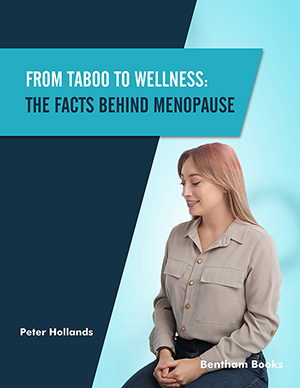Abstract
Background: Healthy and satisfying sex life is one of the important elements of well-being and quality of life in women.
Objectives: This study aimed to investigate the effect of sexual counseling on self-efficacy, assertive sexual communication, self-awareness, sexual attitude, awareness of sexually transmitted diseases, and HIV in addicted women in mandatory drug treatment camps.
Material and Methods: The present study was conducted on 68 women in two groups (intervention = 34, control = 34). The intervention group received the counseling program. The control group received routine services from the rehabilitation center.
Results: The results showed that in the intervention group, 31 (100) before the intervention and 26 (86.7) 4 weeks after intervention (p = 0.05), had heard the name of STDs (p = 0.28). Moreover, 12 (38.7) participants in the intervention group and 12 (38.7) in the control group could name 4 symptoms of STDs in women 4 weeks after intervention (p = 0.001).
Additionally, the sexual attitude was 44.64 ± 4.21 and 45.38 ± 4.09 in the intervention group and 40.66 ± 4.50 and 39.93 ± 4.71 in the control group 4 and 8 weeks after the intervention, respectively. (p = 0.01). Moreover, the obtained results showed that the mean score of sexual knowledge was 40.25 ± 3.62, 41.74 ± 3.44 and 36.36 ± 5.37 in the intervention group 4 and 8 weeks after the intervention, showing a significant difference (p = 0.02).
Conclusion: The findings of this study showed that sexual knowledge, sexual attitude and selfefficacy, and sexual assertiveness could be improved through interventions based on skills and empowerment. In addition, by presenting knowledge on STDs, condom use for safe sex in addicted women can be increased.
Keywords: Women, condom, sexual negotiation, addiction, reproductive health, sexually transmitted diseases.
[http://dx.doi.org/10.15419/bmrat.v4i12.398]
[http://dx.doi.org/10.1016/j.profnurs.2014.11.001] [PMID: 25999199]
[http://dx.doi.org/10.1155/2013/950278]
[http://dx.doi.org/10.2174/1874944501811010339]
[http://dx.doi.org/10.1016/j.ijgo.2015.02.001] [PMID: 25712778]
[http://dx.doi.org/10.1186/s12905-019-0709-2] [PMID: 30665343]
[http://dx.doi.org/10.1016/S0140-6736(06)69478-6] [PMID: 17084760]
[PMID: 28496954]
[http://dx.doi.org/10.1097/AOG.0000000000003666] [PMID: 31923070]
[http://dx.doi.org/10.2147/PPA.S175852] [PMID: 30323569]
[http://dx.doi.org/10.1016/j.jsat.2017.04.009] [PMID: 28554604]
[http://dx.doi.org/10.15296/ijwhr.2019.25]
[http://dx.doi.org/10.1080/00224499.2017.1421607] [PMID: 29466024]
[http://dx.doi.org/10.1080/00224499.2013.809511] [PMID: 24024546]
[http://dx.doi.org/10.1515/ijamh-2016-0010] [PMID: 27176740]
[http://dx.doi.org/10.1016/j.drugalcdep.2021.108655] [PMID: 33689969]
[http://dx.doi.org/10.1177/2325957417732834] [PMID: 28974161]
[http://dx.doi.org/10.1016/j.drugpo.2020.102868] [PMID: 32717706]
[http://dx.doi.org/10.1159/000486466]
[http://dx.doi.org/10.2337/diaclin.22.3.123]
[http://dx.doi.org/10.1016/j.ssmph.2021.100782] [PMID: 33912648]
[http://dx.doi.org/10.1007/s11199-009-9725-2]
[PMID: 24554940]
[http://dx.doi.org/10.1186/1472-6874-12-13] [PMID: 22624530]
[http://dx.doi.org/10.11910/12227-16394.12018.11906.11903.11901]
[http://dx.doi.org/10.2147/HIV.S163269] [PMID: 30174461]
[http://dx.doi.org/10.2105/AJPH.2007.129858] [PMID: 19197086]
[http://dx.doi.org/10.1080/14659891.2018.1562575]
[http://dx.doi.org/10.15296/ijwhr.2018.39]
[http://dx.doi.org/10.1921/gpwk.v29i2.1213]
[http://dx.doi.org/10.1007/s10461-005-1680-5] [PMID: 15812612]
[http://dx.doi.org/10.1097/00007435-200001000-00008] [PMID: 10654867]
[PMID: 24639734]
[http://dx.doi.org/10.1186/s12889-018-6178-y] [PMID: 30424761]
[http://dx.doi.org/10.1016/j.jsat.2015.07.003] [PMID: 26293644]
[http://dx.doi.org/10.1007/s10461-015-1048-4] [PMID: 25845530]
[http://dx.doi.org/10.1037/0022-006X.63.1.154] [PMID: 7896983]
[http://dx.doi.org/10.1080/19317611.2017.1307300]













